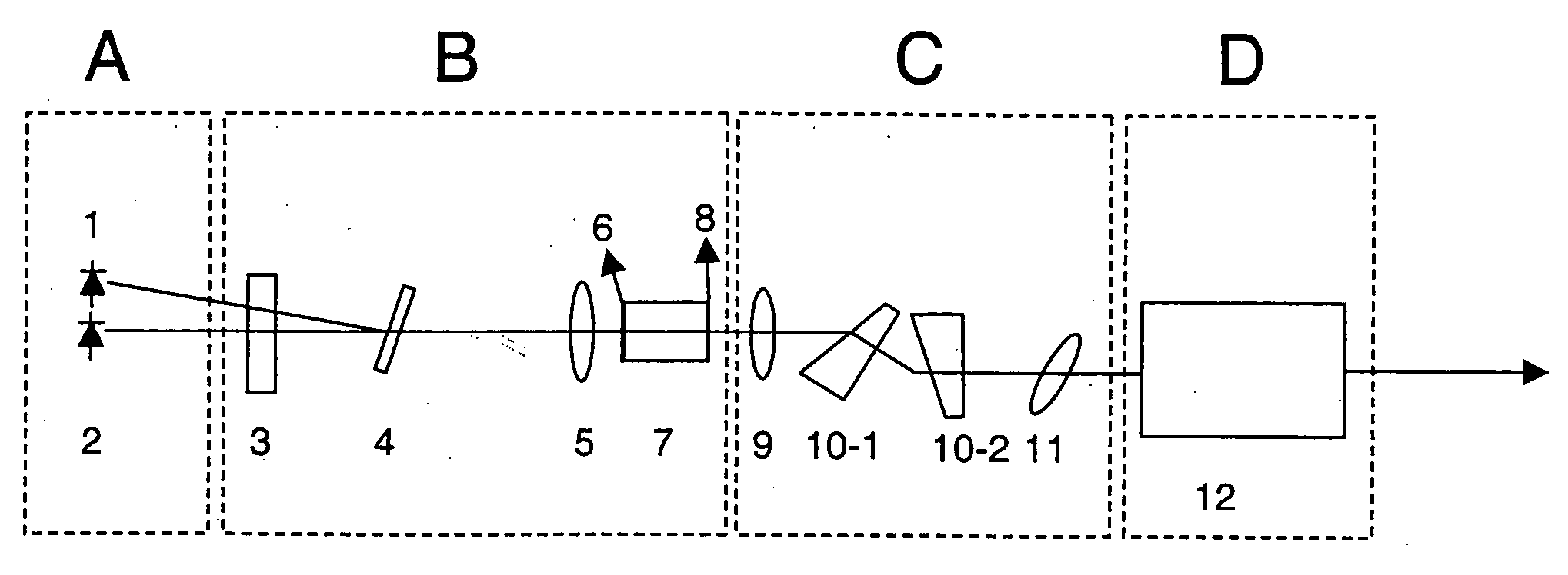Method for increasing the dynamic range of a cavity enhanced optical spectrometer
a technology of enhanced optical spectrometer and dynamic range, which is applied in the direction of laser optical resonator construction, laser details, optical resonator shape and construction, etc., can solve the problems of significant limitations of argon ion lasers, performance and economics of these instruments, and achieve the same reliability easily, enhance the reliability of these vecsel devices, and the device reliability is less developed
- Summary
- Abstract
- Description
- Claims
- Application Information
AI Technical Summary
Benefits of technology
Problems solved by technology
Method used
Image
Examples
Embodiment Construction
[0027] We have identified a particular type of laser configuration, namely, a doubled external cavity semiconductor laser (DECSL) which, when utilized in conjunction with a specific group of nonlinear optical materials to provide frequency doubling, (second harmonic generation) demonstrates the requisite performance, reliability and cost needed to provide a suitable laser which emits light at selected wavelengths in the 300 to 600 nm range. Achieving the requisite performance requires a unique combination of components for several reasons:
[0028] i) using single-pass SHG may not allow one to achieve the required power level for all applications,
[0029] ii) when power requirements dictate the use of a double pass or quadruple pass architecture, achieving a reliable laser design that does not suffer from optical feedback is difficult. Our design provides two layers of protection to the DECSL laser (the component that suffers from feedback). [0030] 1. All the optical surfaces on which ...
PUM
 Login to View More
Login to View More Abstract
Description
Claims
Application Information
 Login to View More
Login to View More - R&D
- Intellectual Property
- Life Sciences
- Materials
- Tech Scout
- Unparalleled Data Quality
- Higher Quality Content
- 60% Fewer Hallucinations
Browse by: Latest US Patents, China's latest patents, Technical Efficacy Thesaurus, Application Domain, Technology Topic, Popular Technical Reports.
© 2025 PatSnap. All rights reserved.Legal|Privacy policy|Modern Slavery Act Transparency Statement|Sitemap|About US| Contact US: help@patsnap.com



